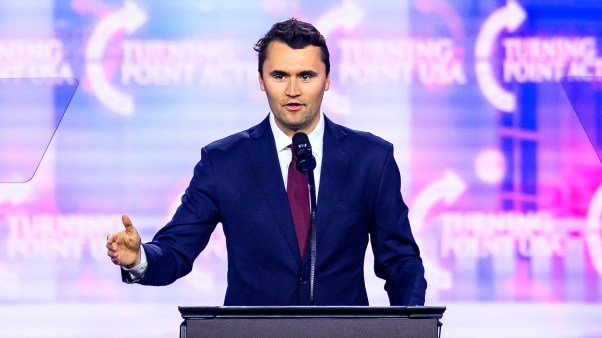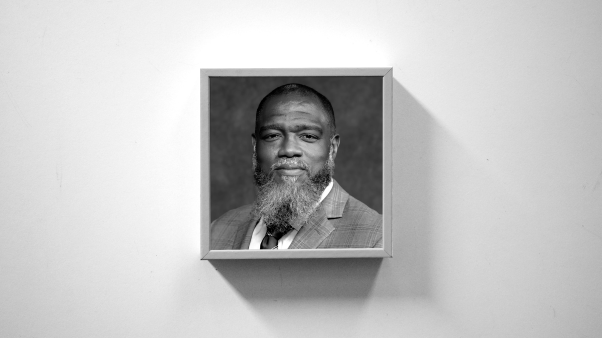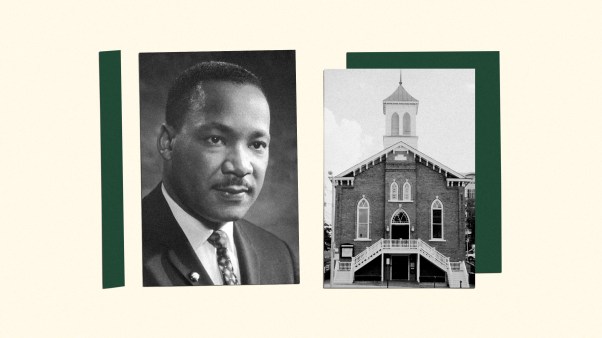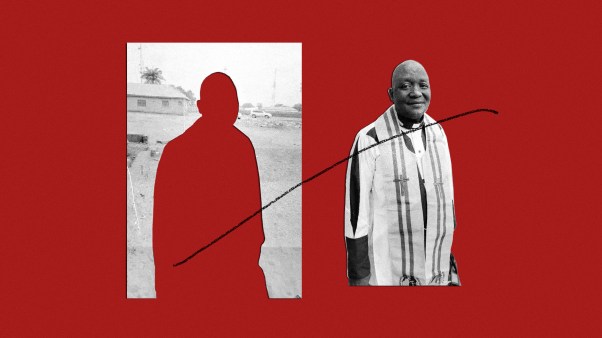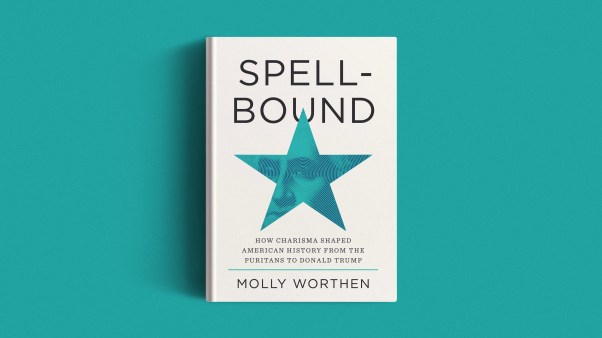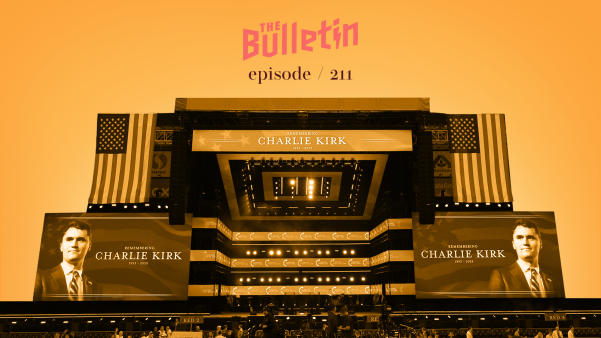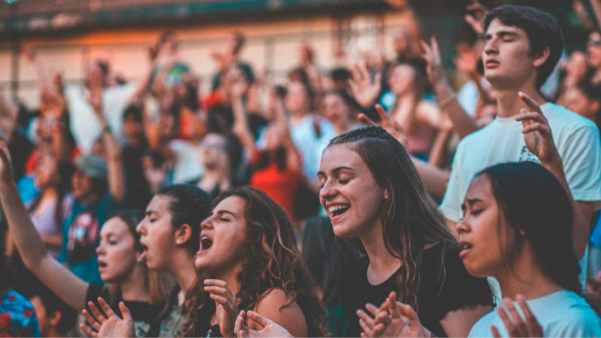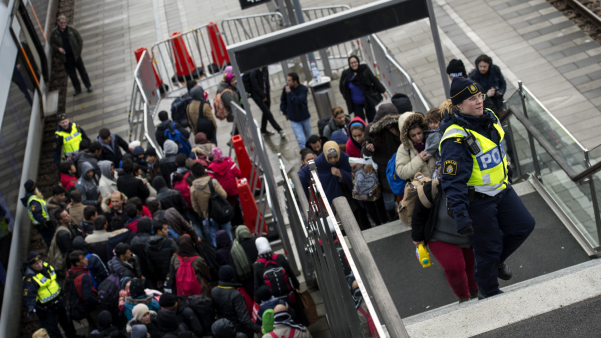  |
Editor’s note: Rather than write a straight review of the extended version of the film, we are simply commenting on the added scenes and bonus material. For reviews of the theatrical version, check these twostories.
One of the bonus discs on the highly anticipated Lord of the Rings: The Return of the King special extended DVD edition, which releases today, includes a telling scene.
It’s three weeks after the film has racked up an amazing 11 Oscars—including Best Picture—at the Academy Awards, and director Peter Jackson is working on a new shoot, adding extra footage to the scene of The Paths of the Dead. The mini-documentary cuts to Jackson before an editing screen, surrounded by members of his crew. Jackson cracks, “We’ve already won the Academy Award for this film.” Everyone in the room snickers. “That’s the best thing to do—win the Academy Award for Best Movie before you finish shooting the last shot. That’s the best way to do it, isn’t it?”

There are yuks all around, but Jackson’s rhetorical question does beg the question: Can one improve upon a multiple Oscar winner? Even if one has the opportunity, should he do it? And finally, are these additions necessarily improvements?
In the case of the 50 additional minutes of the ROTK special edition, that’s debatable. Some of the additions and extended scenes unquestionably flesh out the story—and a few of the characters—making an already wonderful film even richer. But other additions—including several that undermine the dignity of some of the characters—do nothing to improve the film, making one ask, “Does this movie really have to be 250 minutes long, especially when the 200-minute theatrical version was clearly a winner?”
I’d say about half of the extra 50 minutes actually enhance the film. The other half don’t add much at all, and indeed, they detract. Let’s start with the “bad half” first.
The letdowns
Two extended scenes seem to reinforce the notion that Jackson apparently perceives the dwarf Gimli as little more than comic relief—like the annoying sidekick in many animated Disney movies. In one scene, “Return to Edoras,” Legolas and Gimli are celebrating a battle victory with a drinking game—to see who can drink whom under the table first. As both guzzle their brews, Legolas remains unfazed while Gimli gets stupid drunk. When Legolas at last admits he feels a tingling in his fingertips, a cross-eyed Gimli slurs, “He can’t hold his liquor!”—and then passes out, falling over backwards in his chair, slapstick style. Legolas practically winks at the camera when he says, “Game over.” What in the world was Jackson thinking? I love Gimli’s stouthearted—and yes, compulsive—character throughout the stories, but Peter Jackson seems determined to rob the noble dwarf of his dignity.

In another extended scene, on the Paths of the Dead, we see ghosts’ hands reaching up and grabbing for Aragorn, Legolas and Gimli. The king-to-be and the elf steadfastly keep moving, while Gimli stands still, looking perplexed while he tries to blow the ghosts away, like so much cigarette smoke invading his personal space. Jackson clearly wants us to chuckle at this, but I didn’t. The Paths of the Dead are arguably the most terrifying segment of the entire trilogy, and Jackson wants to play them up for laughs?
Jackson even manages to screw up an otherwise very cool new scene, “The Mouth of Sauron.” In this scene, an army of men, led by Aragorn, are massed outside the Black Gate of Mordor. A hideous messenger—the Mouth of Sauron—walks out meet the delegation of men intending to “negotiate.” He shows Frodo’s coat of mithril, taunting the company of men, saying that Frodo has suffered greatly. When Aragorn rides forward, the Mouth mocks him: “And who is this? Isildur’s heir? It takes more to make a king than a broken Elvish blade.” In the book, Aragorn tries to negotiate with the messenger, but here, he shows no restraint and instead does something rash and impulsive—and quite “unkingly.” Why? What was wrong with the way the scene was handled in the book—with Gandalf casting aside his cloak, sending forth a bright white light, making the messenger recoil in fear as Gandalf states, “We reject the terms completely!” The terrified messenger turns and runs back into Mordor. But in the film, after Aragorn’s rash act, Gimli quips, “Well, I guess that concludes the negotiations.” Ha ha—Gimli the court jester, again.
The improvements
Now for the good stuff.
Perhaps the best new scene, “The Voice of Saruman,” comes near the beginning. Christopher Lee’s Saruman had been completely removed from the theatrical version of ROTK, much to Lee’s—and many fans’—dismay. And though his appearance in the extended version is limited to this one scene, it’s a powerful one. Isengard has been overtaken by the Ents, holding Saruman prisoner within the Tower of Orthanc. In this scene, Saruman stands stop the tower, taunting what’s left of The Fellowship. Gandalf urges Saruman to give up, offering a shot at redemption. Saruman refuses: “Save your pity and your mercy. I have no use for it.” Saruman sends down a ball of fire, but no one is harmed. Gandalf announces: “Your staff is broken!”—and Saruman’s staff shatters in his hands. Then Grima Wormtongue appears just as Saruman insults him; Grima then stabs Saruman to death, which is only partly accurate. In the book, Grima indeed kills Saruman, but not till near the end of the story, in the Shire—long after the ring has been destroyed. Nonetheless, it’s a valuable scene, showing that Saruman was given a second chance—and showing viewers his demise. No one will leave this version asking, “What ever happened to Saruman?”

Another new scene, “The Decline of Gondor,” is very helpful in explaining the history of that realm, as Gandalf tells Pippin how Gondor came to its current state—kingless, ruled by stewards instead, with the White Tree withered.
The very next scene, “Cross-roads of the Fallen King,” is also new—and also a winner. Sam and Frodo are crossing into Gondor, and Frodo fears he’ll never return home. But Sam promises, “Of course you will. . . . We’re going there and back again, just like Mr. Bilbo.” And right on cue, a beam of sunlight bursts through the clouds, shining on the fallen head of a statue of one of the old kings of Gondor, illuminating a wreath of flowers on its brow—a floral crown, and a symbol of hope for the weary hobbits.
Another new scene shows the Army of the Dead hijacking the Black Ships—thus filling in some vital information that had been cut from the theatrical version: How did they get on those ships in the first place?
And another new scene, brief but intense, shows Gandalf confronting the Witch King, who is riding one of the horrid winged creatures. The Witch King has the wizard cowering on the ground at the end of his blade, and says, “You have failed. The world of men will fall.” It looks like curtains for Gandalf, but then something happens to draw the Witch King away. You’ll have to watch to see what it is.

Another marvelous new scene is “The Houses of Healing,” one of my favorite chapters from the books. Here we see Eowyn, almost mortally wounded, tended back to health, primarily by Aragorn. Unfortunately, the film only portrays him as showing a little TLC, and gives no hint of his gift of healing—indeed, Aragorn is the primary reason that Eowyn and Faramir, who was also badly wounded, survive. That oversight aside, the new scene is tender and poignant, and we learn why Eowyn and Faramir suddenly appear as husband and wife in the theatrical version. Additionally, there’s a beautiful song in the background of this scene, sung by Liv Tyler—who plays the elf maiden Arwen.
There are too many extra scenes and extended segments to describe here, but suffice it to say, as noted above, that about half of the new material actually improves the film. The rest would’ve been better left on the cutting room floor.
Still, I think the extended edition is worth the price of admission, not just for the additional scenes in the movie, but also for all the bonus material on the third and fourth discs.
Saving the best for last
The bonus material on The Fellowship of the Ring and The Two Towers special edition sets was well done, but they’ve saved some of their best stuff for last. ROTK‘s two additional discs continue the catalog of appendices; Parts 1-2 came with Fellowship and parts 3-4 with Two Towers. Here, Part 5 is called “The War of the Ring” and Part 6 is “The Passing of an Age,” with a total of 13 documentaries and numerous other features. There’s too much to describe it all, but here are some highlights:
> “Home of the Horse Lords,” perhaps the most enjoyable bonus material, is a fine little documentary about the hundreds of horses—and their trainers and riders and handlers—who are such an integral part of all three films. We meet the trainers. We learn about the different horses and their personalities; Ian McKellen (Gandalf) referred to one of the steeds who played Shadowfax as “a diva” with an attitude. We see how Viggo Mortensen (Aragorn) bonded with Uraeus, the horse that played Brego—and how, at the end of production, Mortensen was so attached to Uraeus that he bought the horse and brought it back to America. We also learn about the incredible amount of work involved in filming the scenes of the Riders of Rohan, and how horses and riders—amateurs, not professionals—were brought in from all over New Zealand to film the scenes.
> “Designing and Building Middle-earth” includes four segments (“Designing Middle-earth,” “Big-atures,” “Weta Workshop,” and “Costume Design”) that, like similar appendices on the first two films, clearly illustrate the love and care and attention to detail that went into creating these movies. We learn, for example, that Gondorian armor features the White Tree, though it’s somewhat withered with its leaves falling off, representing a kingdom in decline. The “Big-atures” segment illustrates Jackson’s fondness for building miniatures for the set, and again, the incredible details involved. For a new scene involving the City of the Dead under the mountain, they originally made 200 tiny skulls which, with the help of digital cloning, would form an avalanche of skulls. But when that didn’t turn out looking just right, they ended up making 80,000 skulls for the scene. The attention to detail is also noticeable in the creation of Shelob; Jackson wanted it to resemble a particular spider that frightened him as a child in New Zealand, so they researched that exact species and worked from there.

> “From Book to Script: Forging the Final Chapter” gets into the heads of the writers as they faced the challenges of bringing Tolkien’s epic into a workable screenplay—especially how they dealt with events that happened simultaneously in the books. They noted that some of those simultaneous events actually occurred in two of the books (The Two Towers and Return of the King), and to compensate, they moved the events of four chapters from Two Towers into the ROTK script. It’s interesting to hear them discussing the hows and the whys of their decisions—what they opted to skip, or to change, to better fit the script. You might not agree with their logic, but it’s informative nonetheless.
> “Abandoned Concept: Aragorn Battles Sauron” is self-explanatory: We see a story-board and some rough scenes of Aragorn actually fighting Sauron at the Black Gate. Considering some of the other liberties that Jackson and his writing team had already taken with the text, I was glad to see they punted this silly idea, which is nowhere near what happened in the book.
> “Music for Middle-earth” puts the spotlight on one of the film’s true geniuses, composer Howard Shore. We learn how little snippets of themes that we barely even noticed in The Fellowship of the Ring turned into full-fledged orchestral numbers for ROTK—most notably the Gondor theme. It’s subtly introduced in Fellowship when Boromir speaks at the Council of Elrond, just a faint French horn in the background. But those few notes become the swelling, overriding theme in ROTK, reaching a crescendo during the Lighting of the Beacons. We also learn how Annie Lennox was brought into the picture to sing the closing song, “Into the West”—but only after Jackson nixed what Shore had originally written as the closing song, sending Shore back to the drawing board.
> “The End of All Things” shows that ROTK nearly didn’t make it to theaters in time. Jackson and his team were cutting, editing, scoring and even shooting new footage just weeks before the scheduled release date, and all the last-second tweaks took the production right down to the wire. You’ll feel the tension, the raw nerves and the exhaustion of the crew as they literally worked round the clock in the final days. With all the thousands of details that had to be wrapped up as the deadline approached, it’s a wonder that somebody, somewhere didn’t get sloppy and make a mistake, but in the end, Jackson and Co. delivered a film, just in the nick of time, that was so well done, it went on to sweep the Academy Awards.
Get the complete lineup of everything on the extended edition here.
Photos © Copyright New Line Cinema
Copyright © 2004 Christianity Today. Click for reprint information.






